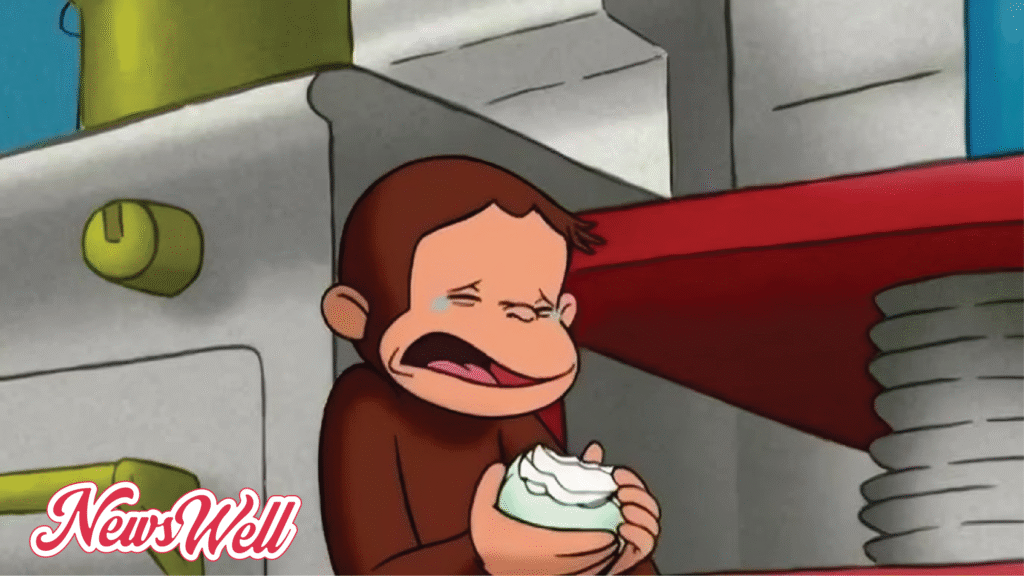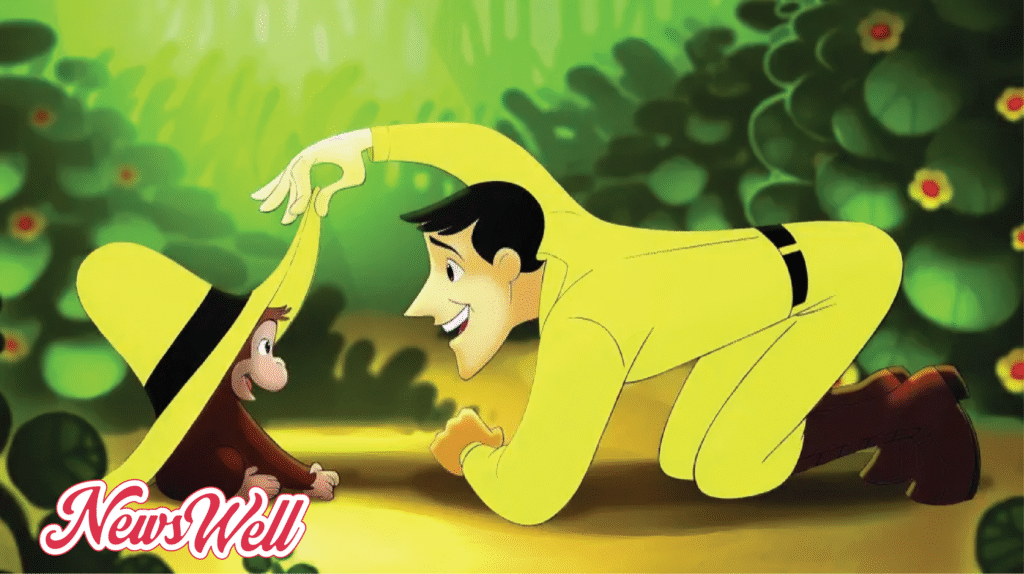It’s a question that pops up in the darker corners of the internet, a strange and morbid whisper among fans: How did Curious George die? This query has taken on a life of its own, fueling grim theories and fan-made stories. But the simple, official answer is this: he didn’t. The beloved little monkey never dies in any book, show, or film. The real story is far more complex and fascinating than this fictional death, involving a real-life escape from war, a controversial origin, and a complete rebranding for the modern age.
The Official Story: A Monkey Who Lives On
Let’s be clear from the start. In the entire official universe created by Margret and H.A. Rey, Curious George is very much alive. From his first appearance in 1941 to his modern PBS show, there is no narrative where he meets a tragic end. The creators intended him to be a figure of joy and relentless curiosity, a character who finds adventure, not doom.
The persistence of the question, “How did Curious George die?” is a testament to internet folklore, not a hidden plot point. It’s a question born from a collective, morbid curiosity that seeks a dark twist in a wholesome tale. But the franchise has always remained committed to its gentle, educational roots, ensuring George’s adventures continue without a grim conclusion.
A Real-Life Survival Story
The irony of the public asking “How did Curious George die?” is that his creators, Hans and Margret Rey, were survivors of a truly life-threatening ordeal. As German Jews living in Paris in 1940, they faced imminent danger from the invading Nazi army. Their escape story is one of incredible courage and ingenuity.

With the city in chaos, Hans managed to build two bicycles from spare parts. Just hours before the Nazis took Paris, they fled, carrying only a few essentials. Among their most precious cargo was the manuscript for a story about a curious little monkey named Fifi, who would later be renamed George. This character, born from their imagination, became their ticket to freedom.
During their perilous journey, whenever they were stopped by suspicious officials, the Reys would show their colorful, innocent drawings. The illustrations of the little monkey convinced authorities they were harmless children’s authors, not spies. In a profound twist, the character whose fictional death is so often queried was directly responsible for saving the lives of his creators. The question shouldn’t be “How did Curious George die?” but how he helped his creators live.
The Internet’s Grim Question
So, if he never died, where did the question “How did Curious George die?” come from? It’s a product of the modern internet, where misinformation and strange queries can spread like wildfire. This phenomenon is sometimes linked to the “Dead Internet Theory,” which suggests that much of online content is generated by bots that amplify strange or nonsensical topics.
A morbid question like this can easily gain traction, creating the illusion of a widespread debate. It taps into a common human impulse to find a dark side to something innocent. The query becomes a piece of internet lore, a creepy pasta-style myth that overshadows the character’s true, and much more interesting, history. The constant search for an answer to “How did Curious George die?” keeps the myth alive.
The Original Sin: A Darker Truth
While George never died, his origin story is genuinely unsettling. The original 1941 book, when viewed through a modern lens, tells a story of abduction. It begins with the Curious George yellow man, an unnamed explorer, spotting George in Africa and deciding, “I would like to take him home with me.” He then traps the monkey in a bag and takes him across the ocean.
This narrative is a stark reflection of colonial attitudes. The plot mirrors the historical trauma of Africans being forcibly removed from their homes. George is taken against his will, imprisoned, and ultimately delivered to a zoo. This troubling story of capture is the real darkness in the franchise, a far more substantial issue than the fictional question of “How did Curious George die?“.
The story’s insistence that George is a “good little monkey” even as he suffers can be seen as a way to normalize his captivity. It subtly teaches compliance with authority, no matter how unjust. This colonial allegory is the true “original sin” of the character, a far cry from the simple, morbid theories circulating online. The focus on “How did Curious George die?” distracts from this much more important conversation.
The Mandela Effect: Does Curious George Have a Tail?
Another popular point of confusion is the Curious George tail. Many people are certain they remember him having one. The question “does curious george have a tail?” is one of the most common queries about the character. The answer is no; he has never had a tail. This makes him biologically an ape, not a monkey, despite the books calling him a monkey.
This collective false memory is a classic example of the Mandela Effect, where a large group of people misremembers a specific detail. Our brains create a mental shortcut for “monkey” that includes a tail. When faced with a character called a monkey who lacks one, our memory often “corrects” the image by adding a phantom tail. This widespread confusion shows how easily our memories of even beloved characters can be flawed.
Modern Myths and Fan Theories
The internet’s fascination with George’s dark side doesn’t stop with his supposed death or his tail. It has spawned numerous fan theories that attempt to explain the strange logic of his world. One popular theory suggests The Man with the Yellow Hat is schizophrenic and George is a hallucination of a monkey he harmed in the past.
Another theory frames him as a dangerously negligent guardian who constantly puts George in harm’s way. These theories, like the question “How did Curious George die?“, are a way for audiences to grapple with the unsettling aspects of the original story. They are attempts to impose a darker, more complex psychological narrative onto a simple children’s tale.
The Reimagined Franchise: A New Life for George
To remain relevant and beloved, the franchise underwent a major transformation. The modern Curious George characters and stories are a world away from the 1941 book. The 2006 film and the long-running PBS Kids series successfully rebranded the character for a new generation. They scrubbed the narrative of its problematic origin, often by omitting it entirely.

The Curious George movie cast featured big names like Will Ferrell as the voice of Ted Shackleford (The Man with the Yellow Hat), while the iconic Curious George voices in the TV series include Frank Welker for George’s sounds and Jeff Bennett for Ted. This new universe is filled with a supportive community, including friends like Professor Wiseman and Chef Pisghetti, who nurture George’s curiosity. The question “How did Curious George die?” feels utterly out of place in this warm, educational world.
Curious George for Modern Viewers
The modern franchise has expanded to include holiday specials and a vast library of content. The Curious George Halloween special, A Halloween Boo Fest, is a perfect example of the new formula. It’s a gentle, fun-filled mystery about a local legend, with no real danger, focusing on friendship and creativity.
For anyone wondering where to watch Curious George, the content is widely accessible. The PBS Kids series can be streamed on platforms like Peacock and is available on the official YouTube channel. The movies and specials can be rented or purchased on services like Amazon Prime Video and Apple TV. The sheer volume of this positive, life-affirming content makes the question “How did Curious George die?” seem even more absurd.
Conclusion
In the end, the search for an answer to “How did Curious George die?” leads us down a fascinating rabbit hole. The answer is simple: he didn’t. But the question itself unlocks a much richer story. It reveals the incredible tale of his creators’ survival, the problematic colonial themes of his birth, and the savvy rebranding that secured his place in the hearts of children today.
The grim internet theory is a red herring. The real story is about how a character born from a dark time in history, and from a narrative of capture, was transformed into a symbol of joyful learning and curiosity. George’s legacy is complicated, but it is one of life, adaptation, and endurance. The question was never “How did Curious George die?“; it was always about how he has managed to live so many different lives.
Frequently Asked Questions (FAQs)
- How did Curious George die?
He didn’t. In the official books, shows, and movies created by Margret and H.A. Rey, Curious George never dies. The idea of his death is a popular internet myth. - Does Curious George have a tail?
No, he does not. This is a common false memory known as the Mandela Effect. Biologically, his lack of a tail makes him an ape, even though he is called a monkey. - Why is the original Curious George story controversial?
The 1941 book tells a story of George being captured in Africa by The Man with the Yellow Hat and taken away against his will. Critics view this as an allegory for colonialism and abduction. - Who were the creators of Curious George?
Margret and H.A. Rey, a German-Jewish couple, created the character. They famously escaped Paris on bicycles in 1940 just before the Nazi invasion, carrying the original manuscript with them. - Where can I watch the modern Curious George shows?
The PBS Kids series is available for streaming on platforms like Peacock and the official Curious George YouTube channel. The movies can be rented on services like Amazon Prime Video.
Curious for more? Dive deeper on our site now! News Well

